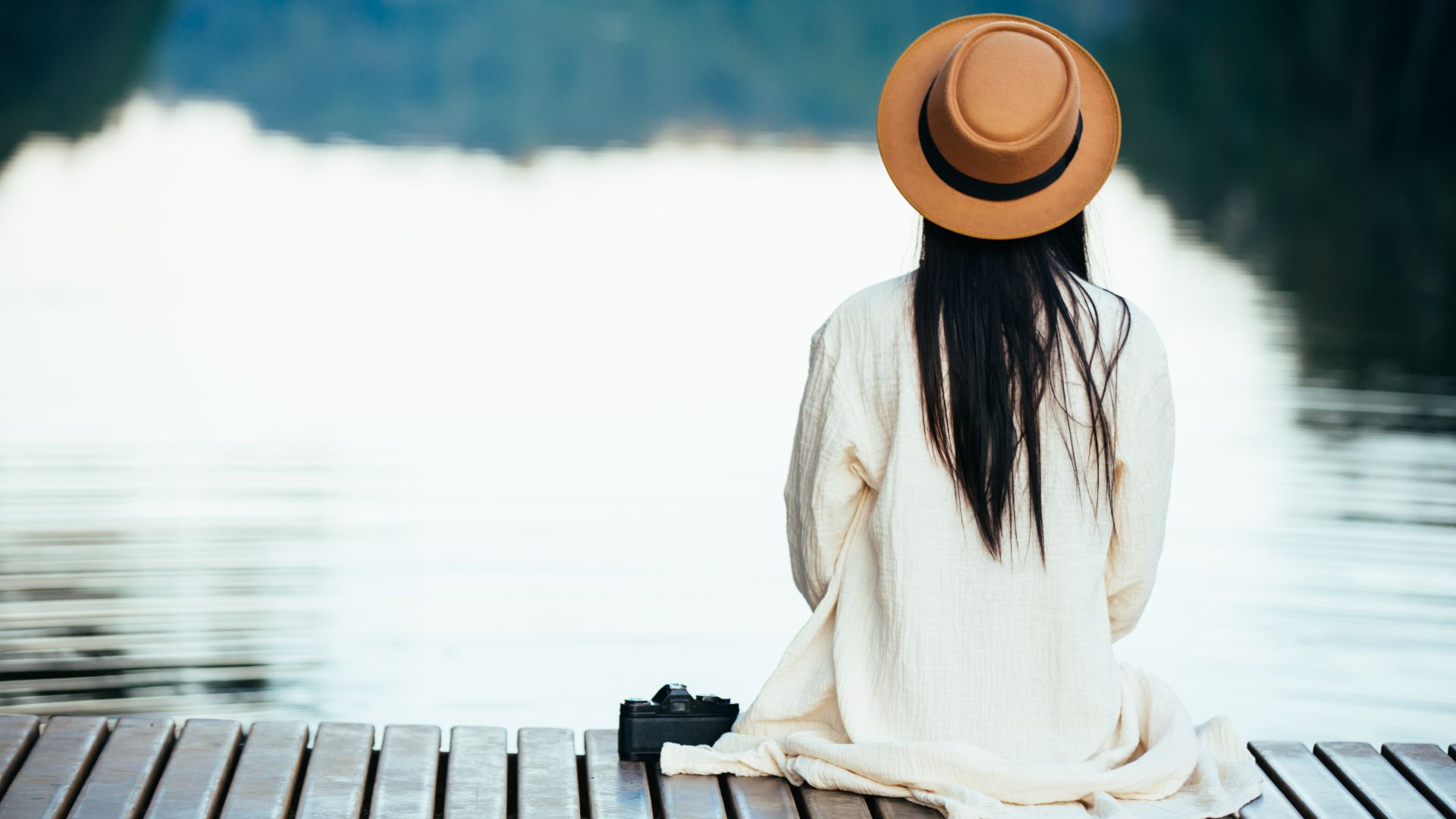What is Self-Isolation or The Art of Disappearing?
In today’s fast-paced world, the concept of disappearing has taken on a new meaning. It’s not just about physically vanishing; it’s also about the art of withdrawing into oneself, finding solace in solitude, and rediscovering one’s inner self. Self-isolation, often misunderstood as mere seclusion, offers a profound opportunity for reflection and rejuvenation.
Understanding the Essence of Disappearing
The concept of disappearing transcends mere physical absence; it embodies a deliberate act of retreat and introspection. Dr. Sheetal Nair, in her exploration of “The Art of Disappearing,” suggests that disappearing is not about evading responsibilities but about creating a space for profound self-reflection and renewal. This intentional withdrawal allows individuals to temporarily disconnect from the noise of everyday life and reconnect with their inner selves, fostering creativity and clarity.
In the context of personal growth, disappearing can be seen as a strategic retreat to gain perspective and recharge. It’s a transformative experience that encourages individuals to confront their thoughts and emotions without external distractions. This introspective journey, as highlighted by Kate Christensen, offers a sanctuary for healing and emotional well-being, enabling individuals to navigate challenges with renewed strength.
From a cultural perspective, the act of disappearing is mirrored in artistic expressions. Artists like Jean Karotkin use self-portraits to capture the essence of solitude and introspection, reflecting on the isolation experienced during times of crisis. Their work not only serves as a form of artistic expression but also as a testament to the human capacity to find meaning in moments of seclusion.
Practical Applications in Everyday Life
Practically, the art of disappearing can manifest in various ways. It might involve taking breaks from technology to reconnect with nature or engaging in solitary activities that promote mental clarity and personal growth. Each act of disappearance is unique, tailored to individual needs for rejuvenation and self-discovery.
Perspectives on Self-Isolation
Self-isolation, often misunderstood as mere seclusion, holds profound meanings across various perspectives. Dr. Sheetal Nair explores “The Art of Disappearing” by emphasizing self-isolation as a deliberate choice for introspection and personal growth. This perspective suggests that withdrawing from the hustle and bustle of daily life allows individuals to reconnect with their inner selves and foster creativity.
Ashish Cecil discusses self-isolation as a transformative experience, where solitude becomes a catalyst for clarity and self-discovery. By stepping back from external influences, individuals can gain a deeper understanding of their thoughts and emotions, leading to personal development and renewed perspectives.
From a psychological standpoint, self-isolation offers a space for individuals to confront and process their emotions. It provides a necessary pause from the demands of social interactions, allowing for emotional healing and resilience building. Kate Christensen’s exploration further underscores this point, highlighting how self-isolation can serve as a protective measure for one’s mental well-being during challenging times.
Cultural and Artistic Expressions
In the realm of culture and art, the concept of disappearing finds expression through various mediums. Artists like Jean Karotkin use self-portraits to depict the emotional journey of isolation, reflecting on personal and collective experiences. Their work not only captures the solitude of self-isolation but also explores its transformative potential in artistic expression.
Practical Applications in Everyday Life
Practically, self-isolation can manifest in everyday life through intentional practices that promote solitude and reflection. Whether it’s taking solitary walks in nature or dedicating time to creative pursuits, these moments of self-isolation nurture mental well-being and personal growth. Each instance of self-isolation becomes a unique opportunity for individuals to recharge and reconnect with themselves amidst the complexities of modern life.
The Psychological Dimensions
Self-isolation holds profound psychological implications, offering individuals a space for introspection and emotional processing. Dr. Sheetal Nair discusses in “The Art of Disappearing” how self-isolation can serve as a therapeutic retreat, allowing individuals to reconnect with their inner selves away from the pressures of external influences. This intentional withdrawal fosters a sense of clarity and self-awareness, enabling individuals to navigate life’s challenges with renewed resilience.
Ashish Cecil explores self-isolation as a psychological sanctuary, where solitude becomes a pathway to emotional healing and personal growth. By temporarily disconnecting from social interactions, individuals can confront their emotions, address inner conflicts, and cultivate a deeper understanding of themselves.
From a mental health perspective, self-isolation provides a necessary pause from the constant stimulation of modern life. It offers individuals the opportunity to recharge mentally, reduce stress levels, and enhance overall well-being. Kate Christensen’s insights underscore how self-isolation can act as a form of self-care, allowing individuals to prioritize their mental health amidst challenging circumstances.
Cultural and Artistic Reflections
Beyond its therapeutic benefits, self-isolation finds expression in cultural and artistic realms. Artists like Jean Karotkin use self-portraits to capture the emotional nuances of isolation, reflecting on personal and societal experiences. Their artwork serves as a testament to the transformative power of solitude in fostering creativity and introspection.
Practical Applications in Everyday Life
Practically, integrating moments of self-isolation into daily routines can promote mental clarity and emotional well-being. Whether through mindfulness practices, journaling, or solitary hobbies, intentional acts of withdrawal nurture personal growth and resilience. Each instance of self-isolation offers a chance to reconnect with one’s inner self and emerge stronger amidst life’s complexities.
Cultural and Artistic Expressions
Self-isolation transcends personal introspection to inspire cultural and artistic expressions that reflect the human experience in solitude. Artists and writers alike find profound meaning in the act of disappearing, using their work to explore themes of isolation, resilience, and introspection.
Dr. Sheetal Nair, in “The Art of Disappearing,” explores how artists like Jean Karotkin use self-portraits to depict the emotional and psychological journey of isolation. These artworks serve as poignant reflections on solitude, capturing the essence of introspection and emotional vulnerability.
Ashish Cecil discusses how literature and poetry also embrace the theme of disappearing, with authors using narrative techniques to delve into the complexities of solitude. Through their writings, they illuminate the transformative power of isolation in shaping individual identity and creativity.
The Therapeutic Role of Art
From a therapeutic perspective, cultural expressions of self-isolation offer solace and catharsis. Kate Christensen’s reflections highlight how artistic endeavors provide a means for individuals to process emotions and find healing amidst uncertainty. This creative outlet not only fosters emotional well-being but also connects individuals through shared experiences of solitude and resilience.
Societal Reflections
In broader societal contexts, the artistic representation of disappearing serves as a commentary on contemporary issues. Jean Karotkin’s self-portraits, for example, resonate with audiences by capturing universal themes of loneliness and self-discovery during times of crisis. Such artworks encourage dialogue and empathy, bridging cultural divides through shared human experiences.
Practical Applications in Everyday Life
In everyday life, individuals can draw inspiration from artistic expressions of self-isolation to cultivate personal growth and resilience. Whether through visual arts, literature, or music, engaging with cultural expressions of disappearing offers a pathway to understanding oneself and connecting with others on a deeper level. These interactions foster a sense of community and solidarity, reinforcing the importance of introspection and creativity in navigating life’s challenges.
Practical Applications in Everyday Life
Self-isolation, beyond its theoretical implications, provides practical applications for daily routines to enhance well-being and personal growth. Insights from literature and personal experiences show how self-isolation can be used as a tool for self-improvement and resilience.
Dr. Sheetal Nair, in “The Art of Disappearing,” discusses practical strategies for incorporating moments of solitude into daily life. These strategies may include mindfulness practices, such as meditation or yoga, which encourage individuals to cultivate inner peace and mental clarity amidst busy schedules.
Ashish Cecil discusses how solitary activities like journaling and creative pursuits allow for self-expression and emotional release. These practices help individuals process their thoughts and emotions, leading to a better understanding of oneself and improved psychological well-being.
The Role of Nature and Solitude
From a practical standpoint, connecting with nature plays a pivotal role in self-isolation. Kate Christensen’s insights underscore how spending time outdoors allows individuals to disconnect from digital distractions and reconnect with the natural world. Nature serves as a therapeutic backdrop, offering moments of tranquility and introspection that are essential for mental and emotional rejuvenation.
Integrating Self-Isolation into Daily Routine
Incorporating self-isolation into daily routines can be as simple as dedicating time for reflection or solitary hobbies. Activities like reading, painting, or gardening offer opportunities to recharge and refocus. These practices ultimately enhance overall quality of life.
Cultural and Artistic Inspirations
Cultural and artistic expressions of isolation also inspire practical applications in everyday life. Artists like Jean Karotkin encourage introspection and emotional exploration through their work, reflecting viewers’ inner experiences. Engaging with these artworks offers insights into the transformative power of solitude, helping individuals apply these lessons to their personal journeys.
Conclusion
Self-isolation, often misconstrued as loneliness or isolation, reveals itself as a profound art form—the art of disappearing. It’s a deliberate retreat into solitude, a sanctuary for introspection and creativity. By embracing self-isolation, individuals can gain a deeper self-understanding, nurture their mental well-being, and become stronger and more resilient. For more such informative blogs keep visiting One World News.




